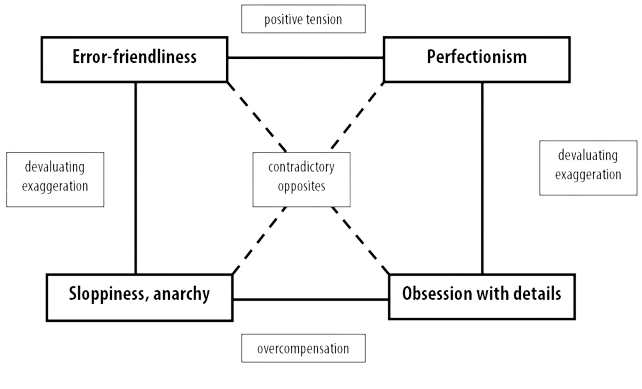Schulz von Thun has developed a series of communication models that offer profound insights into the various facets of human communication. These models are extremely useful for understanding the complexity of conversations, interpersonal relationships, and personal development.
My training is based on his models, and I love applying them in my coaching sessions. They are easy to explain and understand, and the insights gained can be wonderfully applied afterward.
Here is a summary of the models. In coaching, I use them as a basis for deeper insights.
1. The Four-Sides Model:
The Four-Sides Model is a fundamental model that represents the four aspects of a message: factual content, self-disclosure, relationship, and appeal. The factual level describes what is concretely said. The self-disclosure level reveals what the speaker discloses about themselves. The relationship level reflects how the speaker sees the relationship to the recipient. The appeal describes what the speaker expects from the recipient. This model helps understand the complexity of communication and avoid conflicts due to different interpretations.
2. The Inner Team:
The concept of the Inner Team describes the complexity of our personalities and inner conflicts. Schulz von Thun metaphorically uses the term “team” to describe the different voices or aspects of our psyche that interact with each other. Each “team member” represents specific beliefs, emotions, or behaviors that influence our actions and decisions. This model promotes understanding of our inner conflicts and helps us better understand and develop our personalities.
3. The Riemann-Thomann Model:
The Riemann-Thomann Model deals with the complexity of human values and developmental psychological processes. It shows how our values and beliefs influence our personality development. The model identifies four poles of values (e.g., autonomy vs. attachment) and illustrates how our attitudes and behaviors can evolve across different stages of life. This model helps understand individual differences and supports personal growth processes.
4. The Values and Development Square:
The Values and Development Square is closely related to the Riemann-Thomann Model and emphasizes the importance of values in personality development. It distinguishes between different value poles and shows how conflicts or tensions between these values can affect our behavior. The model promotes awareness of our own values and supports self-reflection.

5. The Vicious Cycle Model:
The Vicious Cycle Model describes how negative behavioral patterns or conflicts in interpersonal relationships can escalate. It illustrates the cycle of misunderstandings, accusations, and unproductive reactions that can lead to escalation. This model helps recognize destructive communication patterns and develop alternative actions to break such vicious cycles.
6. The Situational Model:
The Situational Model emphasizes the importance of context in communication. It highlights that every message or action must be interpreted within a specific context that influences its meaning and impact. The model encourages considering context in communication to avoid misunderstandings and interact more effectively.
Overall, Schulz von Thun’s models provide valuable tools for understanding and improving communication, personality development, and interpersonal relationships. They promote a deeper understanding of the various levels and aspects of human interaction and contribute to developing more effective communication strategies.

